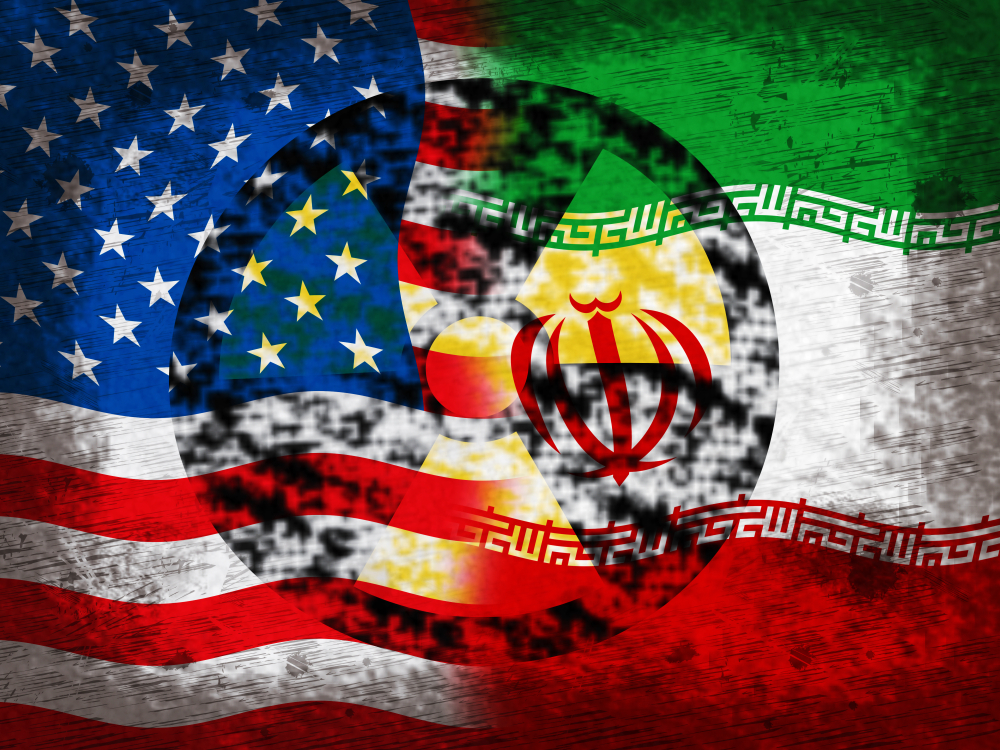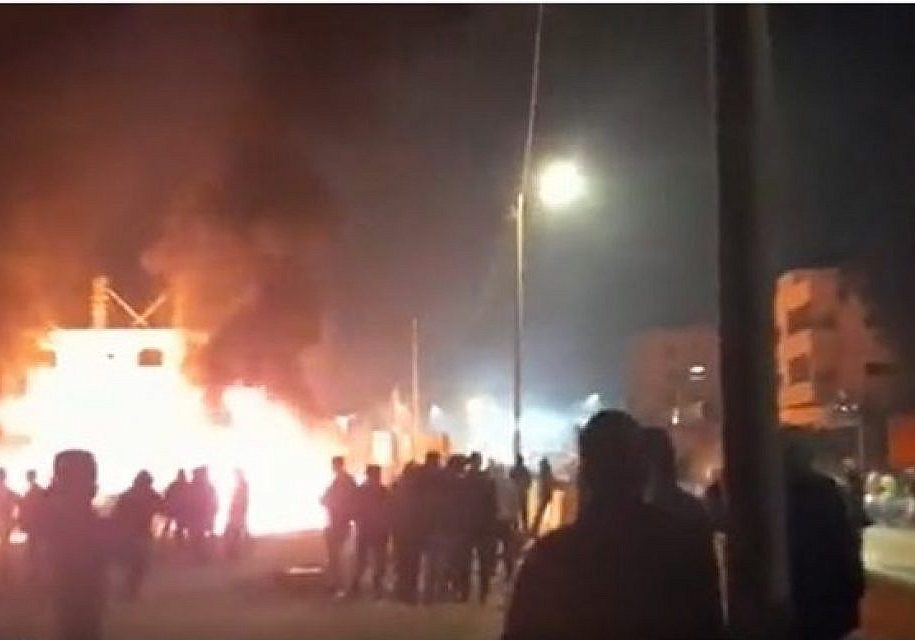FRESH AIR
Latest IAEA reports demonstrate why a new deal with Iran is pointless
June 9, 2023 | Ran Porat

The June 2023 International Atomic Energy Agency (IAEA) reports on Iran (analysed by the US-based Institute for Science and International Security, ISIS) show yet again that Teheran has perfected its techniques for uranium enrichment and stocks enough fissile material to independently break out towards an atomic bomb within days – if and when the Iranian Supreme Leader gives such an order.
Considering this, despite much current discussion of a new “less for less” nuclear deal with Iran allegedly being considered in the US and Europe, such a deal cannot undercut Teheran’s ability to acquire nuclear weapons at will.
Enrichment and fissile material stocks
- As of May 13, Iran’s fissile material stockpiles continue to grow at all enrichment levels:
| Purity (%) | Stockpile (Kg) | Increase since May 2022 | |
| Kg | % | ||
| 2 | 2459.6 | 305.2 | 12.4 |
| 2-5 | 1340.2 | 284.3 | 21.2 |
| 20 | 470.9 | 232.5 | 49.4 |
| 60 | 114.1 | 71 | 62.2 |
| UF6 | 4384.8 | 893 | 20.4 |
| Total (all uranium) | 4744.5 | 935.1 | 19.7 |
- Percentage-wise, the most significant increase in stockpiles was in the high enriched uranium (HEU) of 20% and above. In other words, the production of HEU, which has few civilian uses, is prioritised over low enriched uranium (LEU), which is used in civilian power plants. In addition, no progress has been made towards setting up a plant to convert LEU into the uranium oxide powder required for nuclear power plant reactor fuel.
- There has been no significant change in the variety and number of Iranian uranium enrichment centrifuges of different types (the basic IR-1, and the more advanced IR-2, IR-2m, IR-4, IR-6 and so on).
- Enrichment capacity was up only a notch [to 19,100 separative working units (SWU), up from 18,700 SWU in March] since Iran installed only a small number of new centrifuges (IR-4) over the last few months. However, Teheran is planning to install dozens of new centrifuge cascades (IR-4 and IR-6) across various sites in coming weeks.
Evidence of an ongoing nuclear weapons program
- The IAEA concluded that Iran was able to produce an excuse that is “not inconsistent” with other data, which can narrowly explain the finding of uranium enriched to near weapons-grade (83.7% purity) at the Fordow underground nuclear facility in March. In layman’s terms, the agency does not necessarily accept Teheran’s version of how such high enrichment occurred but has decided not to investigate further.
More importantly, ISIS experts note, Teheran left “an indelible impression” that it can enrich uranium to weapons-grade levels “quickly and perhaps secretly” at will.
- Most of the 60% HEU stock is kept at the Esfahan site, where Iran has demonstrated it can convert it to enriched uranium metal – a key material needed for the core of an atomic warhead.
- Iran is dragging its feet with regards to the 2015 nuclear deal (JCPOA) commitment to convert its heavy water reactor at Arak, originally designed to produce plutonium that can be used for nuclear weapons, into a light-water reactor which does not produce plutonium. Despite recently providing the IAEA with a few updated design documents, the timelines presented by the Iranians for this project (starting work in 2024) are unrealistic.
Monitoring
- There is no significant improvement in the IAEA’s inability to monitor Iran’s nuclear program.
- In recent weeks, Teheran did allow the agency to reinstall some inspection equipment removed by the Iranians in June 2022, such as cameras at the centrifuge parts workshops at Esfahan and enrichment monitoring sensors at the underground and ground level enrichment halls at Natanz.
- However, these “concessions” amount to a drop in the ocean and do not change the fact that the UN agency remains in the dark about most other nuclear-related activities in Iran. This is because:
- Some of the reinstalled IAEA devices are yet to become fully operational.
- Teheran is still holding IAEA camera footage and data from the agency’s sensors collected since Feb. 2021 and is not allowing the agency to access it.
- Since 2021, Iran has not been complying with its basic commitments vis-à-vis the IAEA, severely limiting the organisation’s access to relevant sites in the country.
Possible military dimensions (PMD) investigation
- As it has done for the past two decades, the latest IAEA reports expose yet again that Teheran continues to lie, deceive and hide information from the agency’s investigation into Iran’s past (and possibly also present) nuclear-weapon related activities.
- For example, Iranian reports about the inventory of natural uranium stored at the Esfahan Uranium Conversion Facility (UCF) have proven inaccurate. ISIS experts suggest that this may be because Iran has hidden uranium used in the early 2000s at the nuclear weapon project’s Lavisan-Shian site within the UCF storage site.
- The Iranian regime boasted that the IAEA has “closed” two outstanding issues (out of many), the Varamin and Turquzabad nuclear sites, drawing criticism from Israel about a ‘politicised’ UN agency (an accusation rejected by IAEA head Rafael Grossi). But the June 2023 IAEA reports explain that the agency did not “close” these issues, but rather that the inspectors have “no more questions” about them, meaning that they have given up on getting better answers about them from Teheran.
- A third site mentioned in the reports is at This location was exposed by Israel, based on the secret nuclear archive Israeli agents nabbed from Teheran in 2018. The IAEA says that the latest Iranian explanations about the discovery at Marivan in 2019 of man-made uranium particles can narrowly be considered “possible”, after years of presenting technically unfeasible fibs about these findings. Yet, in no way does the IAEA verify or accept that the Iranian excuses about Marivan are true. Moreover, the UN agency describes in the reports how in 2003 Iran was preparing to conduct a ‘cold test’ at Marivan – the detonation of a fully assembled nuclear weapon, but without its HEU core.
- The bottom line remains the same, as a senior diplomat at the IAEA headquarters in Vienna explained – the IAEA has no doubt Iran carried out experiments in these sites (and others) as part of its efforts to produce the bomb. This is yet more incontrovertible proof that Iran’s nuclear program is not “peaceful”, as the regime claims.
The meaning of the latest IAEA findings
- Breakout time is zero. Iran has enough HEU stock to almost immediately manipulate into the amount of military grade purity uranium (+90%) required for one or more nuclear warheads.
- As HEU stocks are expected to continue growing, real timelines may even be shorter than estimated in the table below, because Iran is likely to install more declared, or secret, centrifuge cascades – and the latter will be hard to detect, given the IAEA today has almost zero ability to supervise Iranian open and covert nuclear activities.
| Number of nuclear warheads | Time needed |
| 1 | 12 days |
| 5 | 1 month |
| 7 | 2 months |
| 8 | 3 months |
- Producing an indigenous a-bomb requires the completion of three inter-connected tasks. The Iranian regime has by now completed the first task – accumulating enough HEU and mastering the technology of uranium enrichment to weapons-grade levels. The second task also seems done, with the unveiling of more and more ‘new’ Iranian ballistic missiles that can possibly carry a nuclear payload.
- There is a disagreement among experts and Western intelligence agencies about how much time Teheran needs to complete the third related task of creating and testing a nuclear warhead. The findings from the Marivan site may shed light on that debate, as the various estimates suggest Iran is somewhere between 1-2 years away from completing that goal.
A new deal: cash for nothing?
Despite the damning IAEA findings, and condemnations of Iran issued by both the US and key EU states following the reports, multiple sources reveal that the US administration, focusing on the Russian belligerency in Ukraine and Chinese aggression in Asia, is again holding talks with Iran in an attempt to reach a new nuclear deal. The fact that the June lAEA session concluded without a formal resolution rebuking Iran is another indication suggesting that such an agreement is sought by the West.
It should be noted that all limitations and requirements imposed on Teheran’s nuclear program in the previous (and now defunct) 2015 agreement (JCPOA) have been breached by Iran many times over by now, and that previous rounds of nuclear negotiations with Teheran ended up achieving nothing except for providing Iran with more time to advance its nuclear work.
A new agreement, if reached, will reportedly seek to “freeze” Iran’s nuclear program in exchange for billions of dollars from currently sanctioned funds being released into the regime’s coffers. Yet putting Iranian atomic activity on ice is virtually useless now – Teheran has already reached its enrichment goals, and such a ‘freeze’ would simply perpetuate its status as a “nuclear threshold” country. And there is no chance any new agreement would address Iran’s growing ballistic missile arsenal.
Policymakers, including those in Canberra, must take all this into account, and should not support a new nuclear pact with Iran that would not stop Teheran’s drive to become a fully-fledged nuclear power. Such an agreement would undermine the rules-based world order by essentially allowing a rogue country to cheat and threaten its way to nuclear weapons in violation of the Nuclear Non-Proliferation treaty – thus threatening global security. Iran’s military support of Russia aggression and policy of unleashing of terror, crime and piracy across the Middle East only underscores how destablising such concessions to the regime in Teheran are.
Instead of empowering and rewarding Teheran for breaking the rules and endangering everyone, Iran’s behaviour should be answered with tighter and tougher sanctions and other punitive measures – and not dubious and unenforceable agreements that provide a monetary handout to an oppressive and dangerous regime with a long record of misleading the international community.
Dr. Ran Porat is an AIJAC Research Associate. He is also a Research Associate at the Australian Centre for Jewish Civilisation at Monash University and a Research Fellow at the International Institute for Counter-Terrorism at the Reichman University in Herzliya.
Tags: Biden Administration, IAEA, Iran, nuclear
RELATED ARTICLES

‘Time’s up for talk’: Joel Burnie discusses Antisemitism Envoy’s report on Sky News

‘Optimism’ for Hamas to ‘exile’ their power and create a permanent ceasefire with Israel: Joel Burnie on Sky News

Australian government’s response to Iran-Israel conflict ‘disappointing’: Paul Rubenstein on Sky News




















